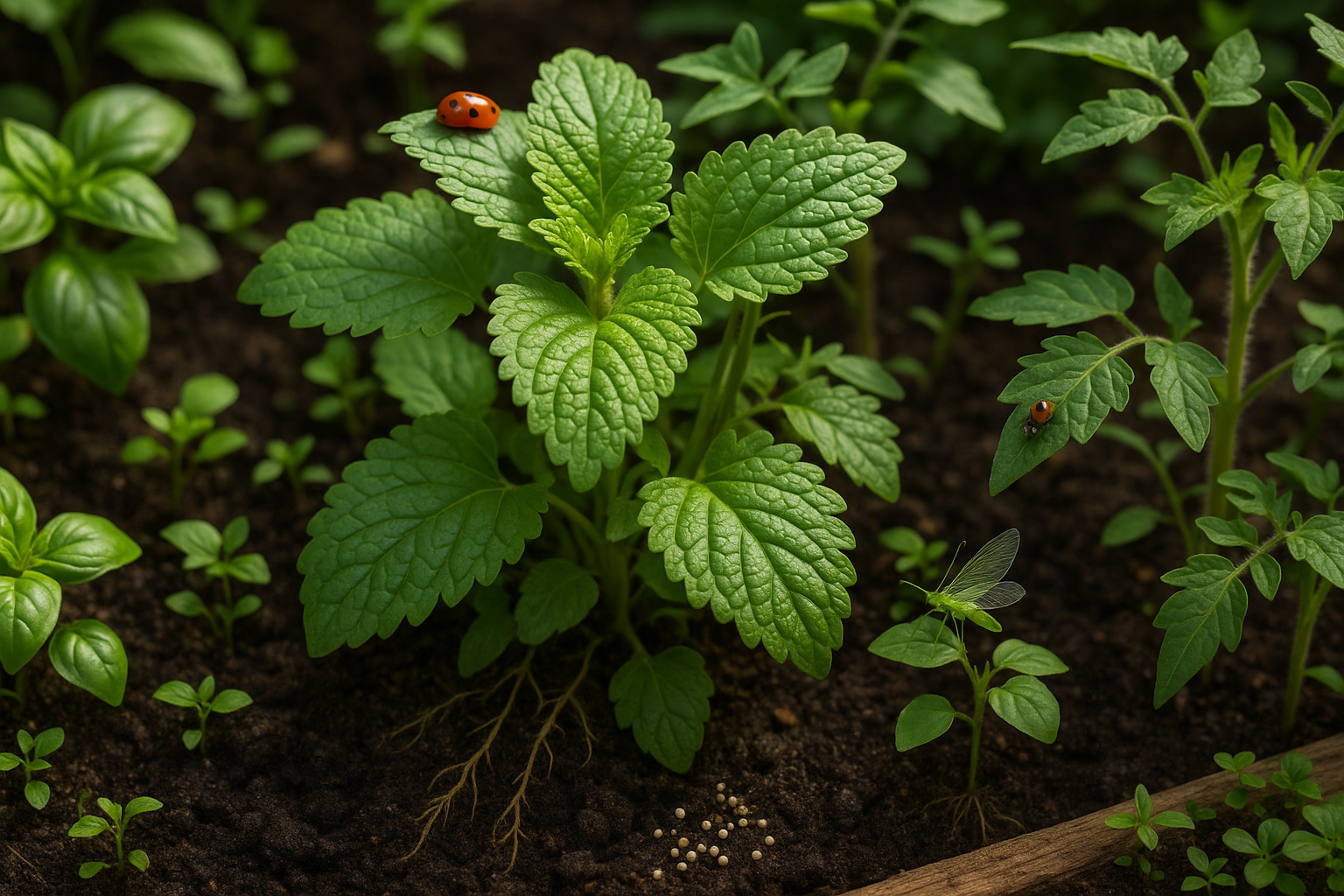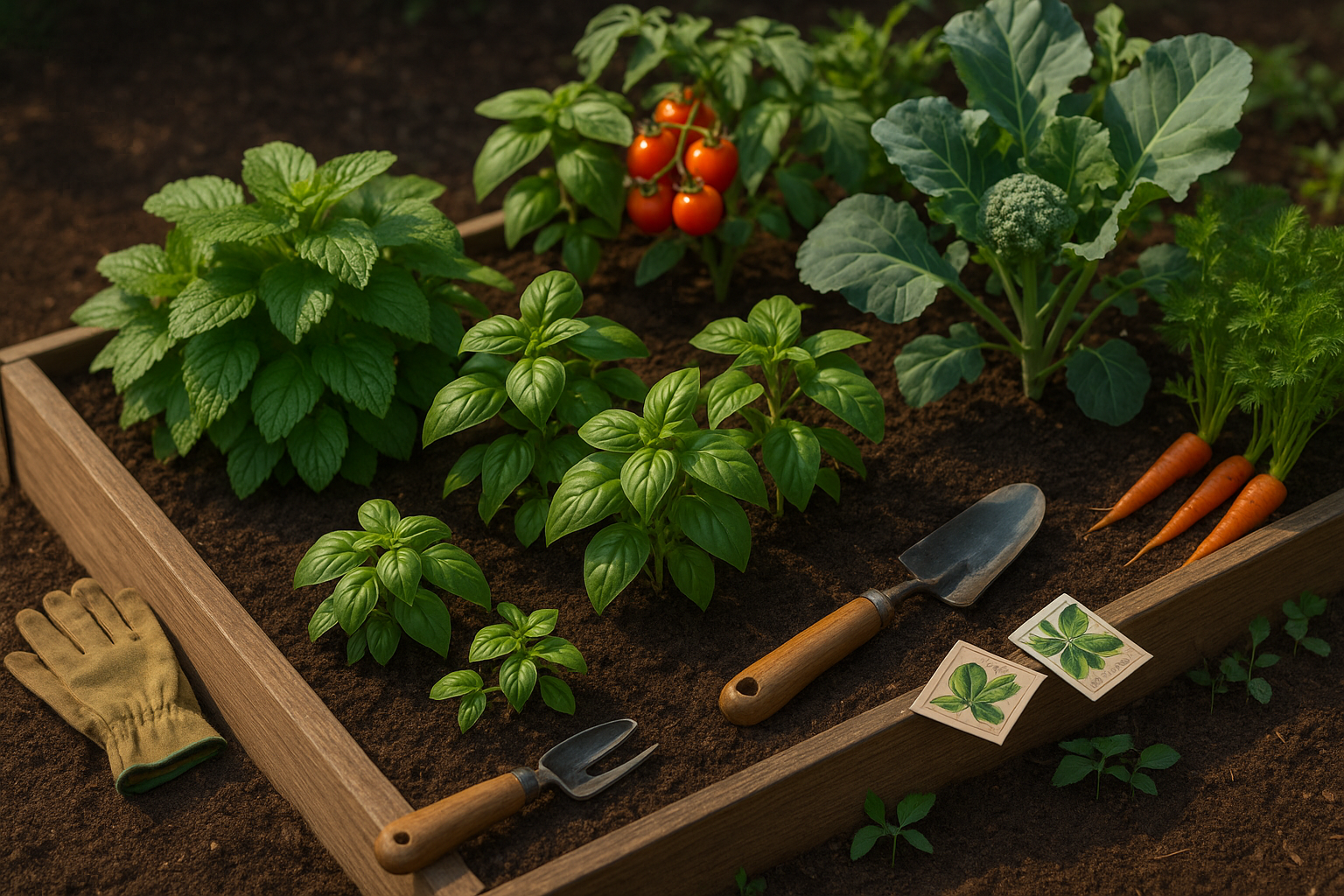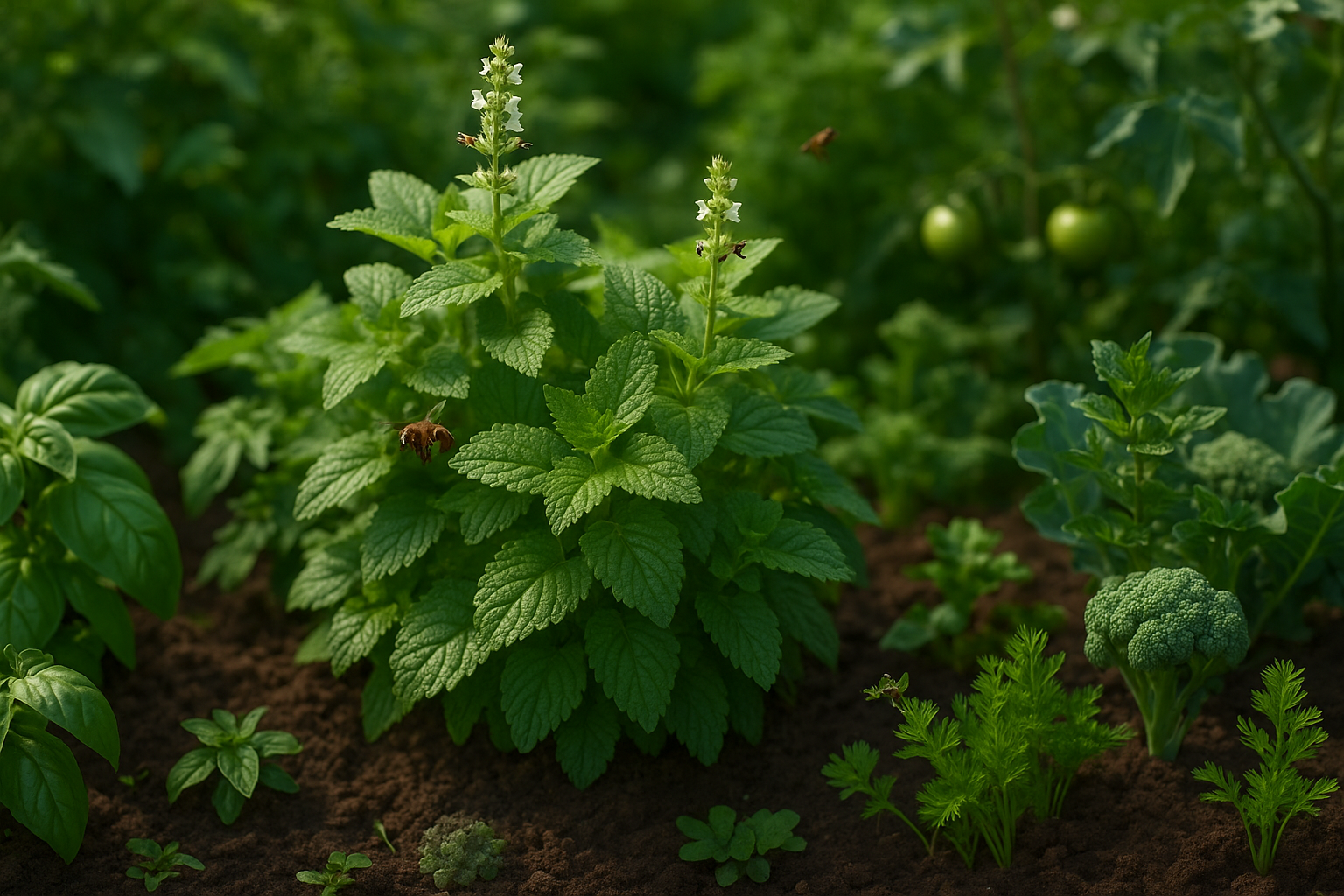Introduction to Lemon Balm Companion Planting

Lemon balm companion plants can make all the difference in your herb garden’s success. With its gentle citrus scent and soothing properties, lemon balm is a favorite among gardeners for attracting pollinators and adding a fresh touch to teas, salads, and desserts. But this versatile herb doesn’t just stand out for its flavor; it thrives even more when planted alongside the right neighbors.
That’s where companion planting comes in. This time-tested gardening strategy involves grouping plants that benefit each other by naturally repelling pests, boosting flavor, improving soil health, or encouraging better growth. For example, pairing lemon balm with crops like tomatoes or broccoli can help deter unwanted insects and attract beneficial ones, reducing the need for chemical pesticides.
However, not all plants get along, and mixing the wrong ones can lead to competition for nutrients, stunted growth, or even disease spread. By choosing the best lemon balm companion plants for your space, you create a thriving mini-ecosystem that keeps your garden healthier, less prone to pests, and more productive.
In this guide, we’ll explore what grows well with lemon balm and how you can use companion planting to get delicious, vibrant results.
Understanding Lemon Balm
Lemon balm (Melissa officinalis) is a hardy, aromatic perennial herb that deserves a spot in almost any garden. With its lush green leaves and subtle lemon scent, this member of the mint family grows in bushy clumps, typically reaching about two to three feet tall and wide if left unchecked.
It thrives in full sun to partial shade and prefers well-drained, fertile soil, but it’s also forgiving of less-than-ideal conditions—making it an easy choice for both beginner and experienced gardeners alike. Lemon balm spreads readily by self-seeding and via rhizomes, so it’s wise to keep it in check with regular pruning or by planting it in containers to prevent it from overtaking neighboring plants.
Beyond its charming aroma, lemon balm naturally repels troublesome garden pests like mosquitoes and gnats, reducing the need for synthetic pesticides. At the same time, its small white blossoms attract bees and other pollinators, as well as predatory insects like lacewings and ladybugs, which help control pests such as aphids.
These dual benefits mean lemon balm can thrive when interplanted with vegetables and ornamental flowers, creating a more balanced and resilient garden ecosystem. For example, planting lemon balm near tomatoes, squash, or broccoli not only draws helpful insects but may also decrease certain pests.
Regularly harvesting the leaves encourages bushier growth and prevents the plant from becoming invasive, boosting its culinary and medicinal yields while fitting seamlessly into a diverse garden plan.
Top Companion Plants for Lemon Balm

Lemon balm is a fantastic herb to pair with several garden favorites, boosting growth, flavor, and pest resistance through thoughtful companion planting.
Basil
Basil is a top pick—plant it near lemon balm to deter aphids and mosquitoes, thanks to their complementary essential oils. This combination works well in containers on sunny patios, making it perfect for small spaces.
Tomatoes
Tomatoes also thrive when near lemon balm, which attracts pollinators and beneficial insects while masking tomato scent to confuse pests like whiteflies. Try tucking a few lemon balm sprigs among tomato plants in a raised bed or hanging basket.
Broccoli
Broccoli benefits from lemon balm’s pest-repelling properties, particularly when you alternate rows or interplant in a garden bed. Lemon balm’s aroma helps deter cabbage moths and aphids.
Carrots
Similarly, carrots planted with lemon balm enjoy improved soil conditions—lemon balm’s sprawling growth helps keep the soil moist and cool, while its scent confuses carrot root fly. Space them closely in deep containers or compact beds for a low-maintenance combination.
Chamomile
Chamomile, another gentle herbal companion, attracts pollinators and enhances both lemon balm’s growth and its natural oils. A pair of small pots by the kitchen door can create a fragrant, pollinator-friendly mini-garden.
Fruit Trees
Fruit trees like apple or pear get a boost from lemon balm planted as a living ground cover—the herb suppresses weeds, attracts bees, and may reduce fungal issues near tree roots. Even if you only have a dwarf fruit tree in a large pot, ring the base with lemon balm for easy maintenance.
With a little creativity, these companion pairings work beautifully in any space, from a windowsill planter to a backyard bed, delivering stronger, healthier plants and a haven for helpful garden wildlife.
Plants to Avoid Growing with Lemon Balm
When planning your garden, it’s important to know that lemon balm, while a versatile and aromatic herb, doesn’t get along with every plant. Avoid growing it near other members of the mint family, such as spearmint or peppermint. These plants share similar sprawling, invasive root systems and will fiercely compete for space and nutrients, often leading to overcrowding and diminished growth for all involved.
Lemon balm can also overshadow more delicate or slow-growing herbs like basil, sage, or rosemary. These plants dislike competition and may become stunted when forced to share resources. Additionally, lemon balm produces allelopathic chemicals—substances that can inhibit the growth of nearby plants—which may make sensitive herbs even less productive.
To avoid these problems, plant lemon balm in its own bed or a large container, giving it at least 18–24 inches of space on all sides. If you want to include it in a mixed herb garden, use physical barriers like buried pots or edging strips to contain its roots and keep it from encroaching on neighbors.
Regularly trim back lemon balm to prevent overcrowding, and avoid situating it close to light feeders or slow starters, ensuring every plant in your garden gets a fair share of nutrients, light, and room to thrive. This thoughtful spacing not only supports healthy growth but also keeps your herb garden easier to manage.
Lemon Balm in Themed Gardens and Polycultures
Lemon balm is a versatile addition to themed gardens and polycultures, offering both beauty and practical benefits. Try weaving it into an herb spiral—a visually striking, space-saving design where plants are layered in a mound, benefiting from varied sun and moisture levels. Position lemon balm on the spiral’s cooler, mid-level spots where it thrives alongside chives, oregano, or parsley.
In pollinator gardens, cluster lemon balm with lavender, echinacea, and bee balm to create a fragrant patch buzzing with bees and butterflies, boosting pollination for nearby veggies and fruit plants. If you’re planting a vegetable plot, tuck lemon balm near tomatoes or squash as a pest-repellent companion. Its aromatic leaves help deter unwanted bugs, reducing the need for chemical sprays and supporting a healthier garden ecosystem.
For extra visual flair, mix lemon balm with edible flowers like calendula or nasturtium, turning functional beds into cheerful, living mosaics. Always tailor your garden experiments to your local climate—lemon balm likes partial sun and moist, well-drained soil but adapts well in containers or raised beds if space or weather is a concern.
Don’t be afraid to play with layouts; observe what works in your microclimate and swap companions as needed to improve harvests and foster vibrant, lush garden spaces. The beauty of using lemon balm in polycultures is the endless opportunity to experiment and discover combinations that bring joy and bountiful returns year after year.
Care Tips for Healthy Lemon Balm and Companions
Caring for lemon balm alongside its favorite companion plants—like basil, cilantro, and chives—means focusing on simple, sustainable practices that support a healthy garden ecosystem.
Lemon balm thrives in rich, well-draining soil with plenty of organic matter, so try mixing compost into your beds each spring. Keep the soil consistently moist but not soggy; water at the base when the top inch feels dry to the touch. Choose a spot that gets at least four to six hours of direct sunlight daily, though some afternoon shade is beneficial in hot climates to prevent leaf scorch.
Prune regularly, snipping stems above the leaf nodes, to encourage bushier growth and to keep lemon balm from overpowering its neighbors. This also improves airflow, helping prevent fungal issues. Overgrowth is a common headache, but strategic pruning and harvesting can keep lemon balm in check, while edging or growing it in containers helps contain its spread.
For pests like aphids or spider mites, attract beneficial insects by planting marigolds or nasturtiums nearby, or use a gentle spray of diluted neem oil as needed. Yellowing leaves or stunted growth could signal nutrient deficiencies; top-dress with compost or water with a homemade compost tea every few weeks to give your plants a boost.
Mulching with straw or dried leaves helps conserve moisture, suppress weeds, and feed the soil naturally. Rotate your crops each season to discourage soil-borne diseases and pest populations. By sticking to organic techniques and observing your plants regularly, you’ll nurture vibrant lemon balm and happy herb companions all season long.
Conclusion & Next Steps for Companion Planting Success
Choosing the right companion plants for lemon balm is key to cultivating a thriving, balanced garden. Lemon balm benefits from being planted near herbs like basil and coriander, or veggies such as tomatoes and squash—these combinations can help repel harmful pests and improve overall growth.
Taking the time to plan these plant partnerships can make your garden more resilient and productive, saving you effort while boosting your harvest. As you look ahead to your next gardening season, consider mapping out garden beds and experimenting with new plant pairings to discover what works best in your space.
For ongoing inspiration and tips, check out gardening forums, local extension office materials, or books like Carrots Love Tomatoes by Louise Riotte. Embracing companion planting isn’t just practical; it’s a chance to get creative and watch nature’s teamwork in action, season after season.
